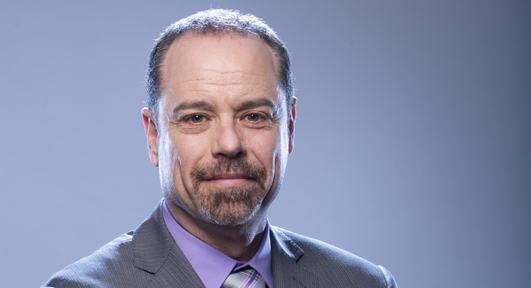
Preparing for the Future, with Thornton May
| Analytic mastery offers the opportunity to render the competition irrelevant and yet, most organizations have not taken advantage of this powerful opportunity. | |
| |
 | Why has examining analytics become one of the hottest business trends today? |
 | Analytics is the quickest and most affordable path to competitive advantage available to leaders today. Analytic mastery offers the opportunity to render the competition irrelevant and yet, most organizations have not taken advantage of this powerful opportunity.
Data, data management and creating value with data have become critical parts of corporate and personal brand, but today decision-making around analytic strategy, architecture, tool sets, base platforms, techniques and capability development in 60% of the Global 2000 remains basically ad hoc. |
 | What are some of the most common Information Technology management problems for the modern executive? |
 | The true role of the modern executive is to make sense of it all: to traverse the various “specialties”, extract what really matters, connect the dots and craft a path forward. Senior executives come to me asking two types of questions:
|
 | You’ve written that big data is a very big sandbox. What steps do companies need to make the most of it without getting overwhelmed by all the data out there? |
 | Choose an important problem. For example, in the retail vertical a critical competency is the ability to “price in the moment” meaning companies need to quickly determine the value of the consumer, the potential revenue and profitability of a particular item or transaction, and make a reasoned offer to the consumer. |
| Make sure your analytics team has not been turned into a reporting team! | |
| |
 | Business analytics has been called the “critical competency of the age.” What can companies do to make sure they have teams who are proficient at this critical competency? |
 | Conduct a “competency audit:” where are you with regard to:
Render transparent processes associated with maintaining the high quality and security of customer data. (In other words, document the “chain of custody” associated with gathering, cleansing, maintaining and using customer data at your company.) Make sure your analytics team has not been turned into a reporting team! |
 | The CIO job title has been around for over 3 decades. How has it evolved over that time? |
 | The job title has not evolved AT ALL since 1981 when researchers at Nolan & Norton coined the phrase. The CIO role was designed to maximize the value obtainable from investments in information technology.
The interpretation of this “Value maximization” objective has changed over the years. Initially, value was maximized by automating existing business processes and giving the business what they asked for. This inside-the-box/cost reduction objective eventually morphed into conceptualizing new processes. |
 | How do you expect CIOs’ roles to change in the upcoming years? |
 | In the future, CIOs will be less transactional and much more inspirational. Boards of Directors are looking to CIOS to “make sense” of a rapidly evolving digital landscape. They now require CIOs to generate new digital revenue streams and manage deep and intimate always-on relationships with customers. |
| What if the people behind the curve knew everything that the people ahead of the curve knew? | |
| |
 | What is the aim of the CIO Solutions Gallery at Ohio State University? |
 | Nobel Prize Winner, Friedrich Hayek believed that civilization advanced by “conquering ignorance” and that ignorance was most effectively conquered – not so much by the addition of new information but rather by the broader distribution and application of knowledge that already exists (i.e., what if the people behind the curve knew everything that the people ahead of the curve knew?)
The CIO Solutions Gallery seeks to make sure that all of us are as smart as the smartest of us. |
 | What steps can CIOs and other leaders take to make cyber security a company-wide effort? |
 | The Canadian Security Intelligence Service (CSIS) sets an excellent example for all of us to emulate. It establishes the right tone at the top and has a culture that understands that information is an asset that must be protected.
All of their buildings are accredited to hold top-secret information. All their IT systems are accredited to handle top-secret information. CSIS classifies every piece of information they receive, generate, and store. They label every paragraph with a security classification (e.g., CEO – Canadian Eyes Only). On top of that it seems that most CSIS employees like their jobs; the organization has been listed as one of the “Top Places to Work in Canada” five years in a row. |
| A technology road map should tell you where you have been, where you are, and where you are going. | |
| |
 | What is a “technology road map” and why is it important? |
 | A technology road map should tell you where you have been, where you are, and where you are going; it should show how you stack up vis a vis competitors, should include time between milestones, the costs associated with each milestone, and the benefits generated from reaching each milestone.
Only 40% of the Global 2000 have a published technology roadmap and the vast majority of “technology road maps” in use today omit the most important part of the map – the technology traveler. |
 | What are the 5 Questions that IT leaders need to ask themselves to prepare for the future? |
 |















